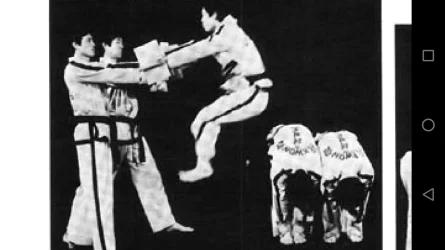The point I was making initially was that training to fight (fo realz bro) wasn't my motivation for sparring.
Also, not every technique is directly effective in isolation.
The reactionary kick I described - one kick got caught so I kicked with the other foot. By itself the second kick would not cause damage, but it would score a point.
Because it scored a point, it was contextually effective.
But, in a different situation it might work as a throwaway technique that may make them release my other foot or disguise a punch for instance. So, it's effective without being effective.
Now, I can't find reference to that technique "being TKD", unless I look at it as something like a second generation derivative of another kick.
Does that make it an invalid move?
The majority of stuff I'll do in sparring is extremely pulled to stay within the rules, because "excessive contact" is a thing.
Other stuff, well it won't do much by itself in a damage analysis no matter how you try to throw it, but as part of something bigger?
Also, not every technique is directly effective in isolation.
The reactionary kick I described - one kick got caught so I kicked with the other foot. By itself the second kick would not cause damage, but it would score a point.
Because it scored a point, it was contextually effective.
But, in a different situation it might work as a throwaway technique that may make them release my other foot or disguise a punch for instance. So, it's effective without being effective.
Now, I can't find reference to that technique "being TKD", unless I look at it as something like a second generation derivative of another kick.
Does that make it an invalid move?
The majority of stuff I'll do in sparring is extremely pulled to stay within the rules, because "excessive contact" is a thing.
Other stuff, well it won't do much by itself in a damage analysis no matter how you try to throw it, but as part of something bigger?



